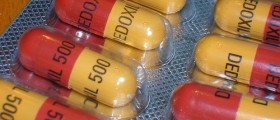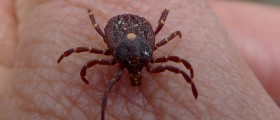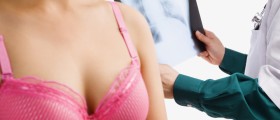
Bubonic Plague is a contagious disease caused by bacterium Yersinia Pestis. This Gram-negative bacterium belongs to the family of Enterobacteriaceae. The name of the disease \"Bubonic Plague\" originates from the Greek word -bubo- which means swollen gland. In deed the symptoms are the swollen glands usually in armpits or groins. The infection is spread through the skin. Bacteria spread through the lymphatics and finally set in lymph glands. If patient is not treated he/ she may eventually die. This deadly disease was responsible for death outcome of more than 25 million European people in the 14th century (a third of all European population at that time).
The disease attacks lymphatic system. The rat flea (Xenopsylla Cheopis) is responsible for the transmission. The hosts of the flea are rodents usually mice and rats. Xenopsylla Cheopis multiplies and accumulates in the gut of the infected fleas. Transmitted fleas drink blood of their hosts and the content of their guts can be distributed by vomiting into the wound. In this way infectious agents enter the body. After entering the body the bacteria spread towards lymph nodes where they multiply. Phagocytes, special cells with strong killing capacity are helpless at defending the body since the bacteria may even enter phagocytes, multiply in them and eventually kill them. The lymph nodes are swollen and due to potential necrosis they may bleed. The disease might even lead to lethal septicemic plague. If plague spreads into the lungs pneumonic form of the disease develops. This condition is extremely contagious and may be transmitted by coughing and sneezing droplets.
The common symptom of this kind of plague is the bubo (swollen and painful lymph node). The most affected are armpits and lymph nodes of the axilla and the neck. The neglected cases include extreme pain of the affected lymph nodes due to necrosis and decaying of the lymph nodes and eventually the skin that covers them. These extreme patients may be even covered with black dots. If the plague spreads to the lungs the symptoms may include coughing, sneezing, and fever. Patient may have difficulties with breathing and vomit blood. Blood is also present in cough mucus. The most serious of all is definitely blood poisoning or septicemia that may lead to death. In this case there are signs and symptoms of high temperature prostration or delirium.
Thanks to the mighty antibiotics nowadays doctors do not encounter cases of great severity. There are few classes of antibiotics that are efficient in curing the disease such as aminoglycosides, tetracyclines and fluoroquinolones.

















Your thoughts on this
Loading...